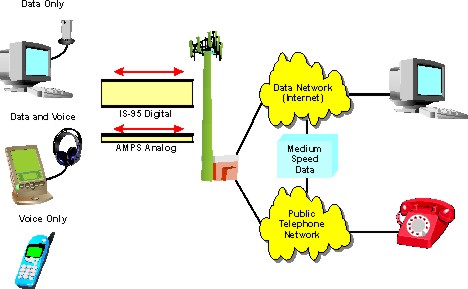Home »
Full Forms »
Technology Full Forms
What is the full form of CDMA?
Full form of CDMA: Here, we are going to learn about the CDMA, full form of CDMA, overview, usages, types, and differences between CDMA and GSM.
By Anushree Goswami Last updated : March 30, 2024
CDMA: Code Division Multiple Access
CDMA is an abbreviation of Code Division Multiple Access. Code Division Multiple Access is a digital cellular technology and displays a network of multiple accesses. The various radio communication technologies use this technique as access to channels. It is commonly used for the communication of mobile.
The various transmitters can transmit information at the same time over a channel of single transmission which depicts the meaning of multiple access to CDMA. In this arrangement, different users are allotted for different CDMA codes and the whole period, the user can access the entire bandwidth without any interruption. It does not restrict the user's range of frequency, as it sends over the complete range of frequency and also makes the most effective use of bandwidth which is available. Therefore, CDMA enables various users to share a band of frequencies between users without excessive interference. On many levels of mobile phones, it is used as an access technique.
During World War II, CDMA technology was developed by English confederate to safeguard their wireless communications from confining tightly into a specified space. When the war came to a finish point, Qualcomm by patenting this technology, made it accessible for everyone commercially. In 1995 September, the first CDMA system was introduced by Hutchison Telephone Co. in Hong Kong.

Image source: http://www.wirelessdictionary.com/wireless_dictionary_CDMA_definition.html
CDMA Usage
- The Global Positioning System (GPS) uses this system of technology.
- Various mobile phone companies use this system e.g. Qualcomm standard IS-2000 also known as CDMA2000 use this system of technology.
- In UMTS 3G mobile phone standard, W-CDMA is used.
- In the OmniTRACS satellite system, CDMA has been used for transferring signals from one place to another.
Types of CDMA
- Synchronous CDMA (orthogonal codes)
- Asynchronous CDMA (pseudorandom codes)
Differences between CDMA and GSM
Following are the crucial differences between CDMA and GSM,
| CDMA |
GSM |
| CDMA operates based on spread-spectrum technology which makes the best use of available bandwidth. |
GSM operates based on the wedge spectrum. it uses both time division multiple access (TDMA) and frequency division multiple access (FDMA). |
| CDMA is more secure. |
GSM is less secure. |
| The use of CDMA is in the USA and some parts of Canada and Japan. 24% of users worldwide only use CDMA. |
The use of GSM is over 80% of the world network in over 210 countries. 76% of the users worldwide use GSM. |
| CDMA has faster data transfer. |
GSM has slower data transfer. |
| CDMA phones emit less radiation. |
GSM phones emit wave pulses continuously and emit nearly 28 times more radiation. |